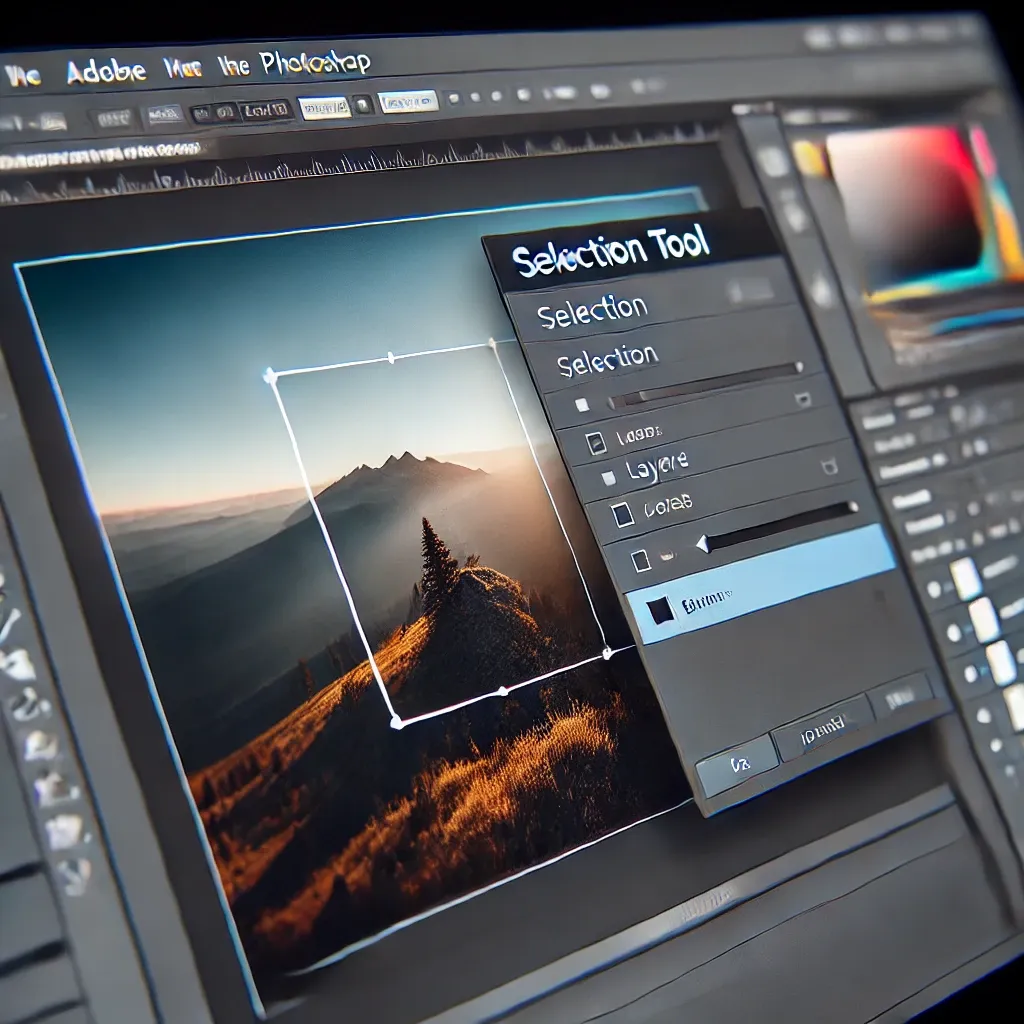Are you struggling with Photoshop’s selection tool? Want to learn how to use the direct selection tool, adjust its size, or even reverse your selections? Discover tips and tricks in this guide for mastering the selection tool in Photoshop!
When it comes to Photoshop, the selection tool is a fundamental feature for editing, manipulating, and creating images. Whether you’re using it to select areas of an image for adjustments or creating detailed compositions, understanding how to use Photoshop’s selection tools is essential. In this article, we’ll explore three critical aspects of the Photoshop selection tool: the direct selection tool, how to adjust its size, and how to reverse selections.
Photoshop Direct Selection Tool
The direct selection tool is a versatile feature in Photoshop, particularly for working with paths and vector objects. It is different from the regular selection tool in that it allows you to manipulate individual anchor points and control handles.
What is the Direct Selection Tool?
The direct selection tool (often accessed by pressing the white arrow) allows you to select individual points, anchor points, or paths in vector shapes. This tool is particularly useful for precise editing when you are working with shapes, lines, or paths. Unlike the regular selection tool, which works by selecting entire shapes or objects, the direct selection tool enables detailed control over the specific components of your paths.
How to Use the Direct Selection Tool:
-
Step 1: Choose the Direct Selection Tool from the toolbar or press A on your keyboard.
-
Step 2: Click on the anchor point or path segment you want to modify.
-
Step 3: Drag the anchor points or handles to reshape the path as needed.
Real-World Application:
If you’re designing a custom logo in Photoshop and need to adjust specific curves or lines, the direct selection tool will allow you to manipulate just the anchor points, ensuring that your design remains precise and professional.
Photoshop Selection Tool Size Adjustment
Another crucial skill when working with Photoshop’s selection tools is adjusting the size of the selection. Whether you’re using the marquee tools or the lasso tool, adjusting the size can help you create more refined selections for your edits.
Why Adjust the Size?
In some cases, the default size of the selection tool might not fit your needs. Adjusting the tool’s size can provide more precision, especially when you’re selecting smaller areas or want to ensure the selection fits a specific part of your image without affecting the surrounding areas.
How to Adjust Selection Tool Size:
-
Step 1: Use the Lasso or Marquee tool.
-
Step 2: For a rectangular or elliptical selection, hold down the Shift key to create a perfect square or circle, or hold Alt (Windows) / Option (Mac) to adjust from the center.
-
Step 3: Use the tool’s options bar at the top to change the feather, which softens the edges of your selection. This is particularly useful for smoother transitions between selected and non-selected areas.
Tips for Precision:
For tasks like photo retouching or detailed composition, adjusting the selection tool’s size can make a huge difference. It gives you the flexibility to select only the area that requires adjustment, without compromising the surrounding details.
Photoshop Selection Tool Reversal
Sometimes, you may find yourself needing to reverse a selection in Photoshop. Reversing a selection can be a game-changer, especially when you accidentally select the wrong area or want to quickly select everything except the current selection.
How to Reverse a Selection:
-
Step 1: Make your selection as usual using any of the selection tools (e.g., lasso or marquee).
-
Step 2: Once the area is selected, navigate to the menu bar and go to Select > Inverse or use the keyboard shortcut Shift + Ctrl + I (Windows) / Shift + Command + I (Mac).
-
Step 3: Your selection will now include everything outside of the previously selected area, making it easy to apply adjustments or deletions to the opposite section.
Use Cases for Reversing Selections:
Reversing selections can be particularly useful when working with complex images or detailed edits. For example, if you are isolating a subject from a background, reversing the selection allows you to quickly select the background for removal, while the subject remains untouched.
Conclusion
Photoshop’s selection tool is a powerful asset that can help you create, adjust, and manipulate images with ease. Whether you’re using the direct selection tool to refine your vector paths, adjusting the tool size for more precision, or reversing your selection for easier edits, mastering these features is essential for efficient and effective Photoshop use. By applying these techniques, you can streamline your workflow and enhance your creative projects.
As Photoshop continues to evolve, new selection features and shortcuts emerge, making it even easier to fine-tune your work. Keep experimenting with these tools to find the best way to improve your workflow and achieve your desired results in Photoshop!






